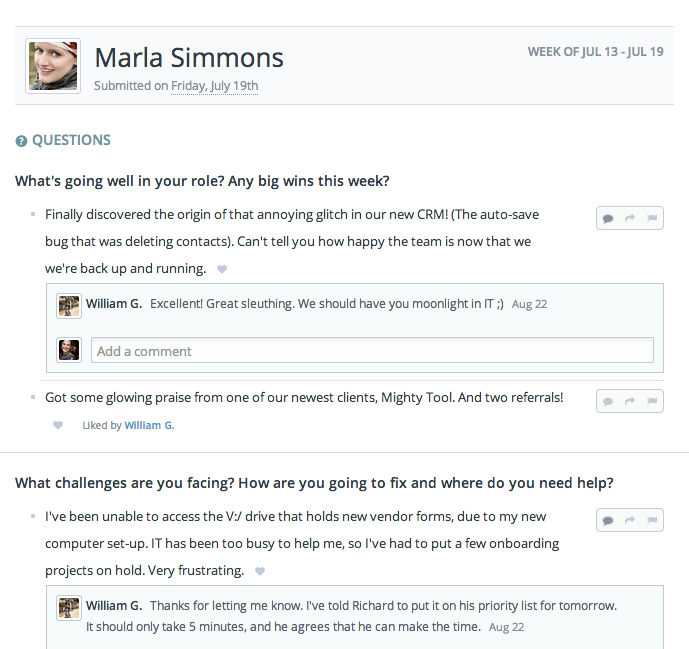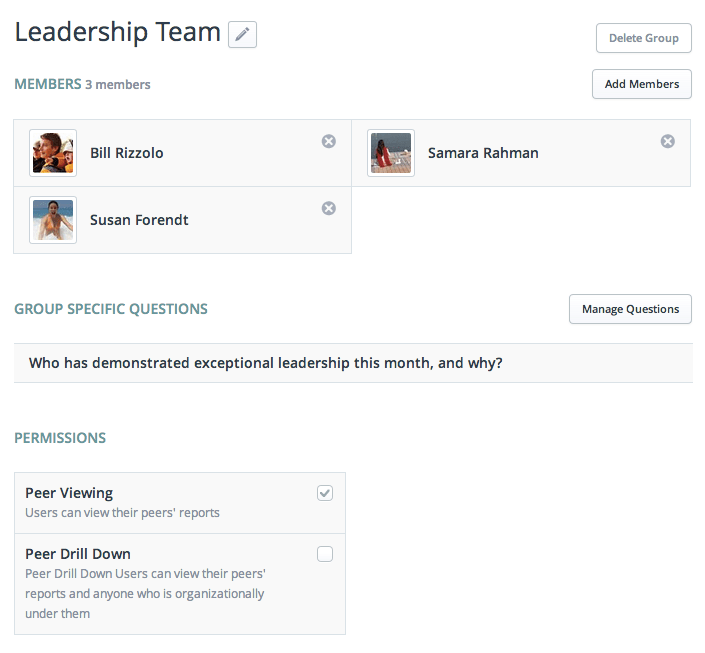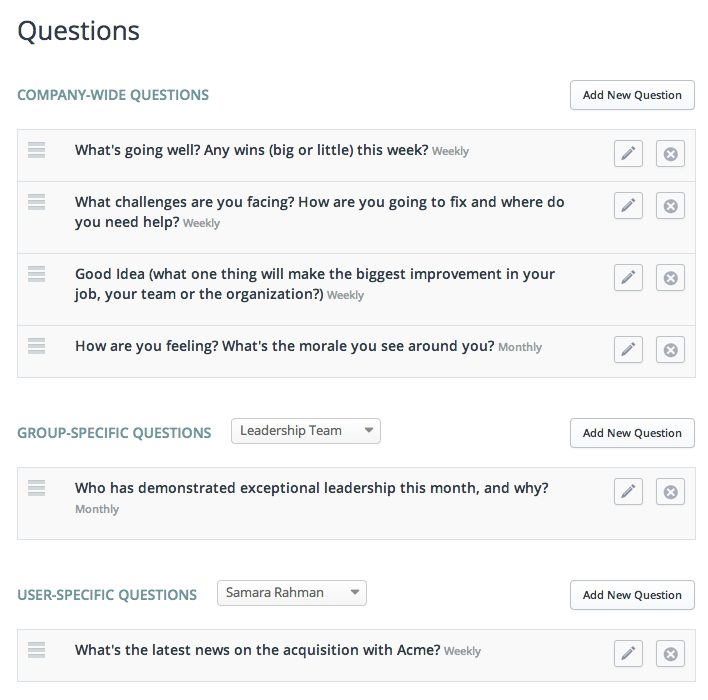
15Five, a startup backed by the likes of 500 Startups and Yammer's David Sacks that provides a platform to help the working world communicate better with its managers, has had a dose of its own medicine. Taking feedback collected from its users since its exit from beta in August 2012, the company is today rolling out a rebuilt version 2.0, with a smoother interface, an easier way to get new employees involved, and more features geared at larger groups and teams with matrix reporting structures — that is, teams reporting to more than one manager.
The app, founded and run by David Hassell, is also adding two new investors to the company: CTO and co-founder Dharmesh Shah, whose company is one of 15Five's customers; and another founder who wants to remain anonymous, but whose startup is also using 15Five. Their investment brings the total raised by 15Five to $1.4 million.
15Five has been picking up steam in the last year, now serving 600 businesses and increasing revenues five-fold. Hassell declines to say how many people are using 15Five within those businesses except to note that they range from small startups to groups at larger organizations like Citrix. Indeed, as with the companies of 15Five's two newest investors, early adopters of the service have been startups and other tech companies, but that is slowly changing to include bigger organizations and those in other verticals, because everyone can benefit from improved communication at work. This was part of the reason for the new version.
One of the new features creates a separation between users and groups, with users now able to report into different groups led by different managers. This is a way of better representing structures at organizations that follow the matrix-management model. Managers who do not necessarily always work with a particular person can now request to follow them on the platform for periods of time — say, when they are on a project together.
Another new feature — which really should be a part of any collaboration software, and yet so often is not (hello, Convo) — is a "follow-up" section, where users can flag conversations they would like to track. Once something in the follow-up section is finished, it can be moved to another new section for resolved conversations and threads.
15Five has taken a lot of clues from social media in its very conception. After all, the infinite loop of feedback that you can have on sites like Facebook and Twitter has made the idea of providing feedback online in the workplace more natural. In this new version, it has added another feature for people to acknowledge other people's comments: a "like" button. And you can also comment on it publicly or privately on any post.
There is also an improved inbox-style dashboard to be able to see all your ongoing conversations whether you are a manager or employee.
Hassell says that this new version has been nine months in the making; he calls it his second baby, since right now his partner happens to be around nine months pregnant. But while babies are perfect things, the products of a startup sometimes are not. Hassell has described 15Five more than once to me as a "lean startup." When the $1 million round was being announced, he even said he intentionally wanted to keep funding low in the early days to make sure that what they were making was matching what users actually wanted and needed.
"We didn't invest in underlying infrastructure because we did it on a shoestring," he recalled.
But what that also meant was that in creating version 2.0, the team realised they needed to start from scratch to rebuild the whole platform more flexibly using Python. This is not an easy thing to do, but it was worth it. Hassell says that the new platform gives 15Five a "phenomenal testing framework" that now lets the company make rapid changes when they are needed.
The lean model 15Five adopted from the start has also helped it to learn other things about its users. Hassell likens the tendency for services like 15Five's to gym memberships, if not done right: "I looked at the gym membership model, and you can see that the reason they do annual plans is because they know all members are unlikely to come in all the time. I was conscious of that, and I wanted to know in real time if people were using and leaving the service." This is partly why the company decided to offer shorter contracts of usage to businesses.
Initially, he says, churn on the site was 4 percent per month, and "that was too high." The beta tests of the new platform indicate that now it is well below 2 percent. Similarly, there is the issue of getting people in the workplace to use it. "Compliance doesn't have to be 100 percent to work, but just has to be enough so that people are using it and getting something out of it," he says.
Hassell is aware that the use of gamification has become quite trendy in the world of HR, but he has so far resisted incorporating that into the site. "With gamification, you are playing into someone's psychology to be competitive. But we are focused on how to make this platform so valuable that people feel compelled to use it," he says.
That said, the company is working on something that sounds more like something from the quantified self movement, he says, by providing more information to employees about their usage statistics on 15Five, and those of the rest of the company. "We'll build it ourselves and won't make it quite so bubbly or gamey."
15Five is $49 per month per business for the first 10 employees, and then $5 per employee per month, with different bulk-pricing options for larger teams. Today there are lots of small companies in the 10-15-user range, he says, and then some bigger customers in the 500-800-employee range, with 20 percent at 50 or more users.
The new version out today is geared toward serving bigger businesses to better serve the Fortune 500 companies that Hassell says 15Five is starting to acquire as customers. But Hassell says 15Five is not yet at the point of expanding its existing self-service model to the "full enterprise" structure that would require larger sales forces and other kinds of infrastructure. That could, however, be the next step after 15Five raises its next round.


No hay comentarios:
Publicar un comentario